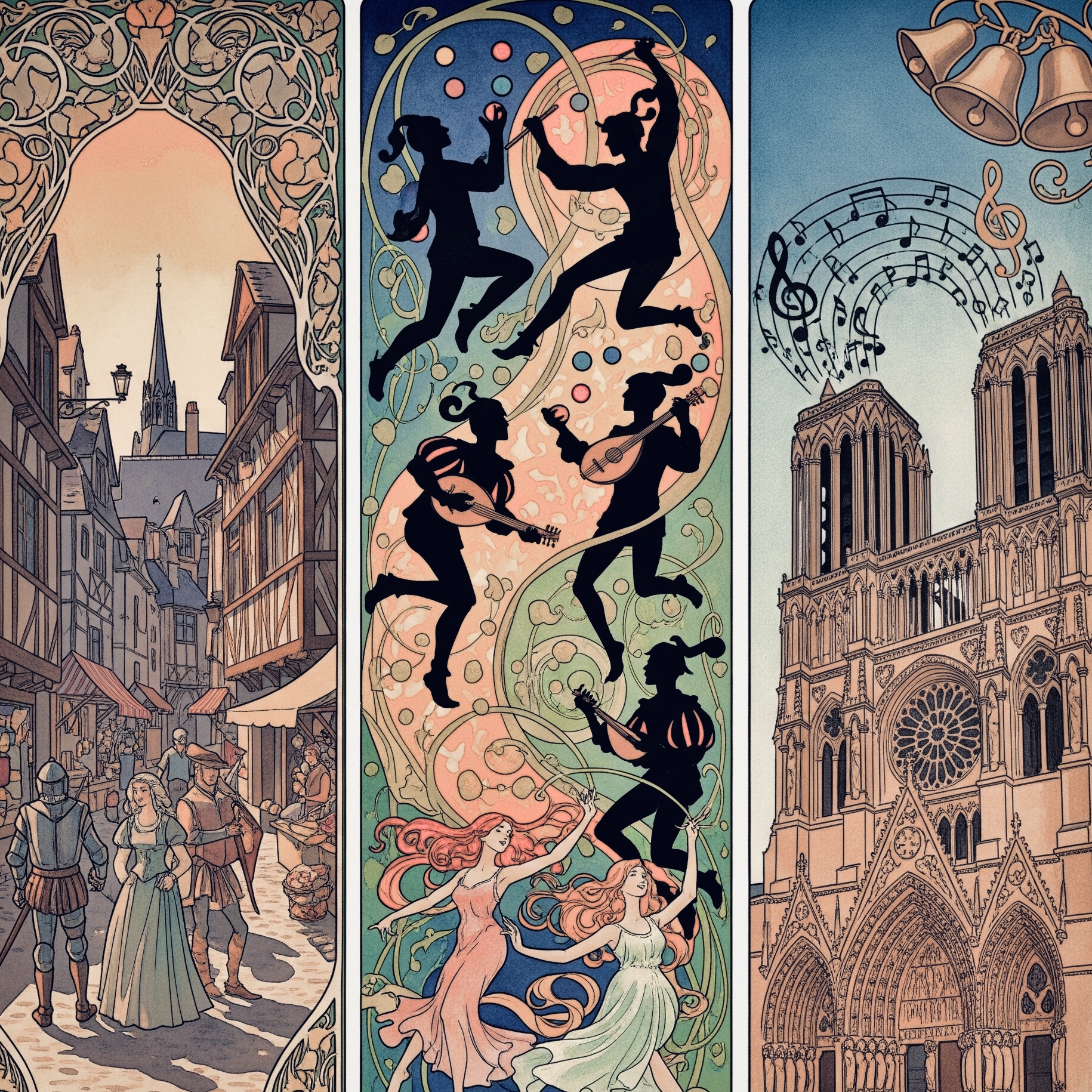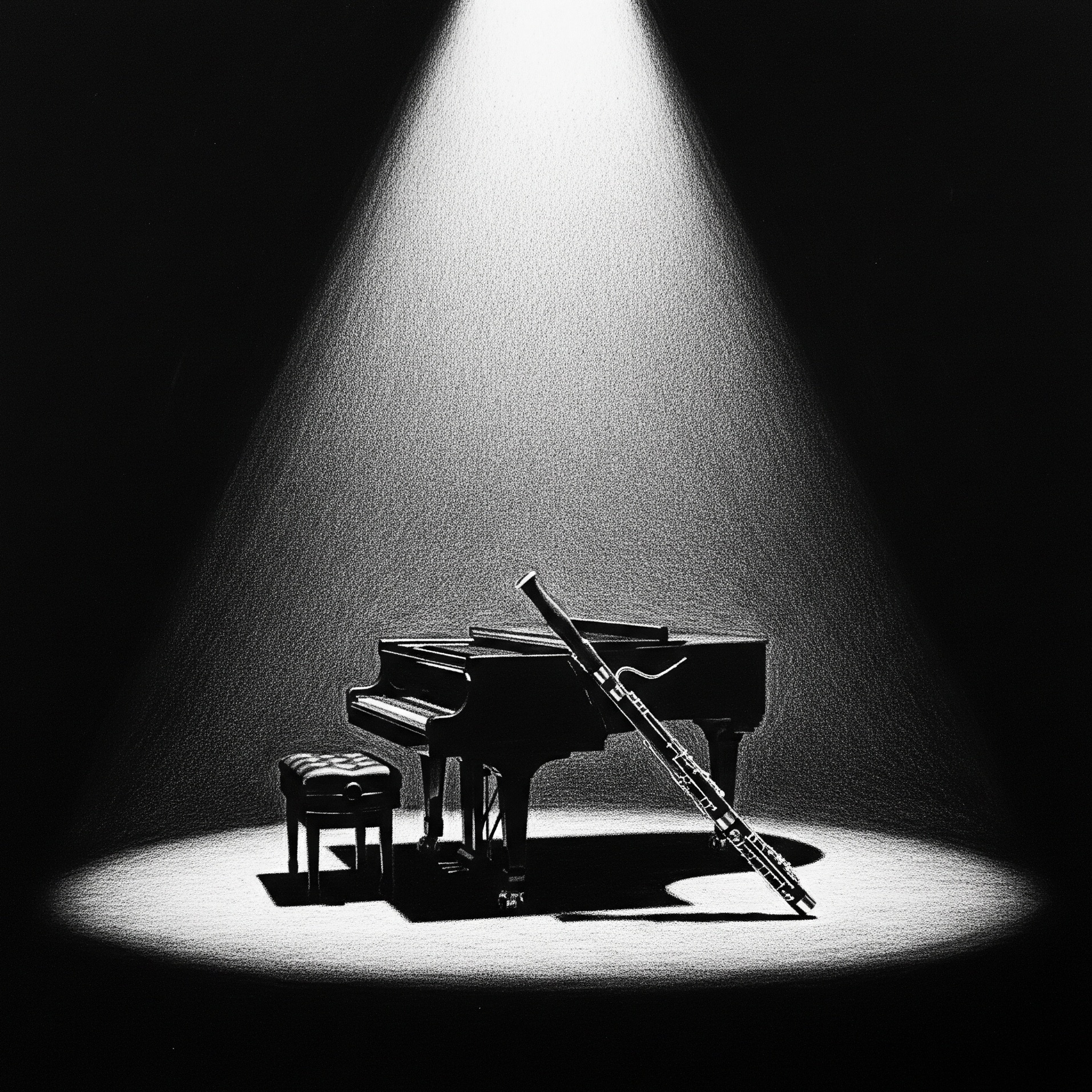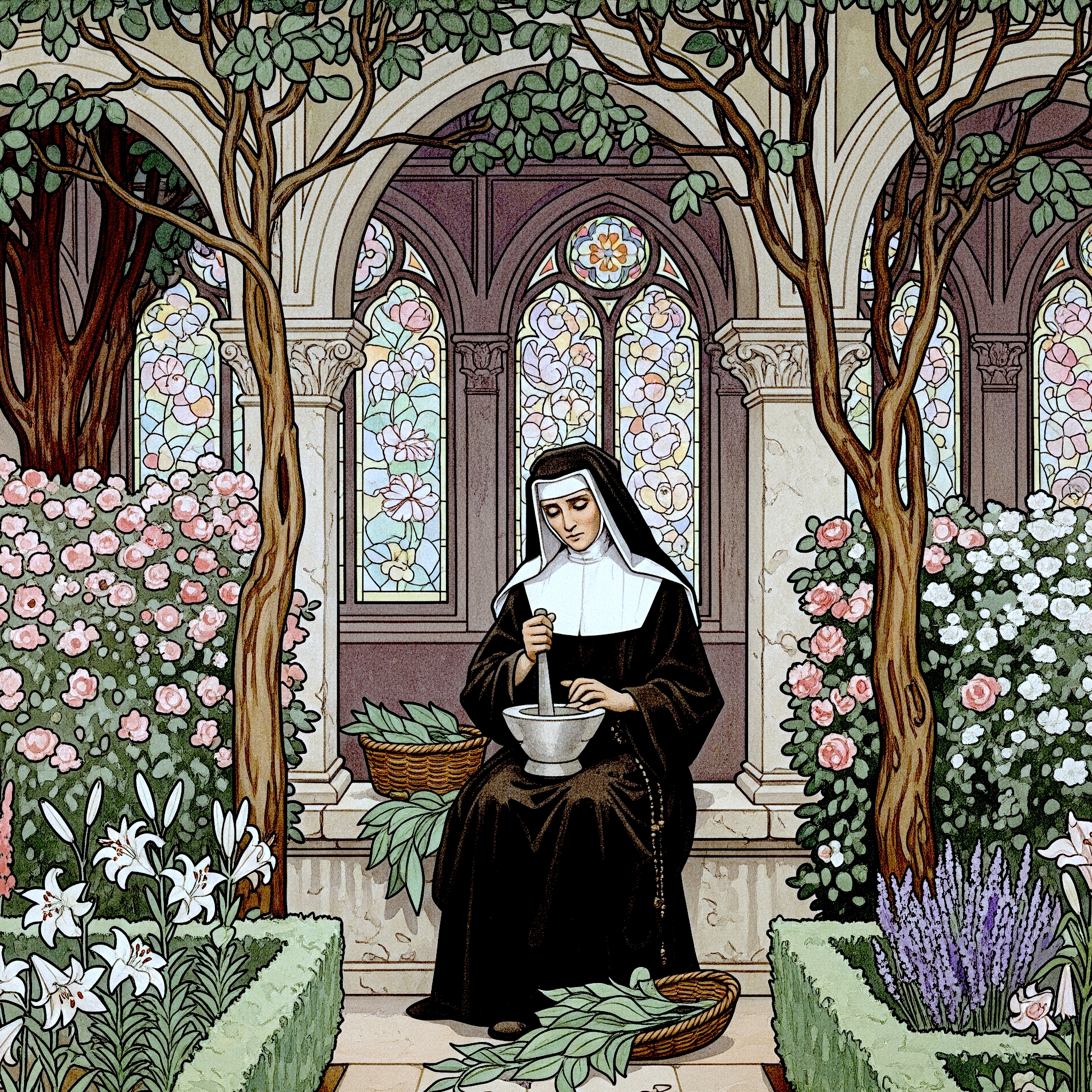Salvatore Caiazzo
Hardworking Musician with solid performance, composition and conducting background. Various publications of orchestrations and original compositions for symphonic band, chamber group, solo instrument and school-grade symphony orchestra.
Attention to details, eclectic and interests versatile.
Music
-
Rhapsodie pour la Cité des Sacres - Concerto for Trumpet and Wind Band
Written originally for trumpet and wind orchestra, this composition was inspired by a visit to Reims, a city of profound historical significance, where the coronations of French kings were held at the Cathedral of Notre-Dame de Reims during the imperial era. Cast in a rhapsodic form, the work unfolds through three distinct musical episodes, with themes that interweave, develop, and recur through the leitmotif technique. The first episode portrays a promenade through the streets of Reims, introduced by a theme from the orchestra, later echoed by the soloist, reminiscent of the styles of late-Romantic and early 20th-century French Impressionist composers. The second episode evokes a Celtic (Gallic) ballad, enriched with variations and counterpoint, featuring dynamic exchanges between the soloist and orchestra. The final episode comprises two musical tableaux: the first focuses on a sacred chant performed by the solo trumpet, accompanied by the orchestra’s evocation of the Cathedral’s bells, notably a sequence (E-flat, F, G) linked to the Feast of St. John on June 24; the second tableau depicts a triumphant consecration and coronation within the Cathedral, reworking the religious chant from the preceding tableau.
-
Veritasomnium - Rhapsody for Bassoon and Piano
Conceived to capture the fragile interplay between sleep and wakefulness during hypnopompic paralysis, this work weaves a seemingly illogical sequence of dreamlike visions and symbols. The solo instrument, thrust into a parallel dimension, emerges as the protagonist of a waking dream. The title, a playful fusion of the Latin Veritas (truth, reality) and Somnium (dream, sleep), encapsulates this duality. Structured as a rhapsody in three distinct sections—dreaming (slow, dark), obscure (lively, agitated)—the piece unfolds through contrasting tempos. Themes recur and intertwine via leitmotif, creating a dialogue between the soloist and accompanying instrument. The first section begins abruptly, with the soloist presenting a sequence of sounds blending the fundamental harmonics of F and C, establishing an immediate harmonic ambiguity that defines the movement. The piano responds with a fleeting imitation before launching into an ostinato accompaniment, underpinning a bassoon theme built on the Dorian mode of F, symbolizing the ephemeral state of the sleeping mind. The second section, darker in tone, evokes a “waking dream,” where the soloist gains awareness within an increasingly vivid dreamscape, culminating in hypnopompic paralysis. Fragmented themes conjure the fleeting imagery of this state. The final section portrays a vibrant, conscious dream. The soloist navigates events with clarity, marked by virtuosic bassoon passages and a clear tonal foundation. A concluding cadenza resolves in an abrupt awakening, emblematic of vivid dreams.
-
Intermezzo from G. Puccini's Opera Suor Angelica (Wind Band version)
This version of the intermezzo from G. Puccini’s opera Suor Angelica is arranged for wind orchestra. The intermezzo serves as an “accompaniment soundtrack” that portrays the struggle and suffering of the opera’s protagonist, Angelica, as she prepares a poison to take her own life after learning of her son’s premature death. This piece, in some ways, conveys the profound power of love, transcending life and every primal need. The aim is to promote a lesser-known work by the composer by extracting this piece from its original opera, making it accessible to a wider audience through a reworking of the original material. This arrangement expands and enhances its lyricism while preserving the original content intended by the author.
-
Prélude in A minor M.65 - M. Ravel (Wind Band version)
Maurice Ravel’s Prélude in A Minor, M.65 (1913), a concise piano miniature, showcases the composer’s refined artistry. Written for the Prix de Rome, a prestigious French competition requiring academic precision, this brief, two-minute work balances restraint with expressive depth. Composed during a transitional phase in Ravel’s career, as he embraced neoclassicism while meeting institutional demands, the Prélude blends classical clarity with subtle modernist elements. Its A-minor tonality and delicate, introspective theme create a melancholic elegance, with sparse textures and nuanced dynamics suggesting orchestral potential. This new wind ensemble arrangement amplifies the piece’s latent colors, highlighting Ravel’s orchestrational genius in a fresh context. The wind ensemble’s rich timbres—clarinets’ warmth, flutes’ clarity, and brass’ resonance—enhance the Prélude’s harmonic shifts and rhythmic interplay, transforming its intimacy into a vibrant showcase. This adaptation elevates a lesser-known gem, often overshadowed by Ravel’s famous works like Boléro, reaffirming its understated beauty and enduring legacy.
-
Musica Proibita - S. Gastaldon (version for Soprano and Orchestra)
Stanislao Gastaldon’s Musica proibita (1881), a quintessential Italian salon romanza, has been reimagined in a vibrant orchestral arrangement that breathes new life into this gem of late-Romantic decadence. Originally composed for voice and piano, the song’s poignant narrative of forbidden love, set to Nino Oxilia’s evocative text, captures the era’s tension between passion and societal constraint. This modern orchestration elevates the work’s lyrical soul, transforming its intimate melancholy into a sweeping, cinematic experience suited for grand concert halls. By expanding the delicate pianistic textures into lush string lines, soaring woodwind melodies, and subtle brass accents, the arrangement amplifies the romanza’s emotional depth while preserving its nostalgic charm. This revitalization not only honors Gastaldon’s masterpiece but also reintroduces its decadent allure to contemporary audiences, bridging the 19th-century Italian salon tradition with the expansive resonance of the modern symphonic stage.
-
Intermezzo from F. Cilea's Opera Adriana Lecouvreur (for Symphonic Band)
Francesco Cilea’s opera Adriana Lecouvreur, with a libretto by Arturo Colautti, was composed between 1899 and 1902, drawing from the eponymous drama by Eugène Scribe and Ernest Legouvé. The work recounts the life of the historical figure Adrienne Lecouvreur, a Comédie-Française actress, and her rumored poisoning, linked to her affair with the Count of Saxony, betrothed to the Princess of Bouillon, her suspected murderer. Commissioned by Sonzogno, the opera premiered on November 6, 1902, at Milan’s Teatro Lirico, achieving resounding success and cementing Cilea’s status as a leading figure in Italian Verismo. The opera’s intermezzo weaves themes from its four acts, adhering to classical opera conventions. Its orchestration is deliberately sparse, typically using strings and select woodwinds, offering performers and audiences a brief respite. In this wind ensemble adaptation, the intermezzo transcends its operatic origins, reimagined as a standalone symphonic work. The enriched instrumentation emphasizes contrapuntal interplay, highlighting individual voices within the wind orchestra. This transcription showcases the ensemble’s potential, challenging the historical undervaluation of such groups. By revitalizing this rarely performed opera, the arrangement promotes a renewed appreciation of its legacy.
Scores
About

Salvatore Caiazzo is a young musician from Campania, Italy. He graduated in Trumpet from the G. Martucci Conservatory of Music in Salerno (IT) at the age of 19, quickly discovering a passion for orchestration and conducting. His musical journey is enriched by performance experiences with various symphony orchestras and symphonic bands, both in Italy and abroad—including the OFC, Teatro Verdi Symphony Orchestra, Carroll University Wind Band, WBO of Salerno, among others. In December 2017, Salvatore earned his degree in Wind Band Orchestration from the same conservatory. He has actively participated as an official student in masterclasses with renowned conductors and composers such as Harper, Cilmer, Broadnax, Mangani, and others, focusing on conducting and orchestration. During 2018 and 2019, Salvatore served as Artistic Director of the A. Carrera band in Pagani (SA), a youth music ensemble fostering local talent in the Agro Nocerino-Sarnese area. He is also the Artistic Collaborator and Deputy Conductor of the Gran Concerto Bandistico Città di Fisciano, a prominent symphonic wind band in the Valle dell’Irno. He has held the role of Artistic Director for the third and fourth editions of the Voci Nuove competition in Pagani (SA), working closely with emerging performers and conducting mixed symphonic-pop ensembles with his own original arrangements specifically crafted for these events. In July 2020, Salvatore completed his Master’s Degree in Wind Band Orchestration at the G. Martucci Conservatory with a thesis in composition, writing an original piece for solo trumpet and wind orchestra. His concerto Rhapsodie pour la Cité des Sacres for trumpet and wind orchestra (and its reduction for trumpet and piano) is currently included in the trumpet curriculum at the G. Martucci Conservatory of Salerno (IT). His wind band arrangement of the Intermezzo from Puccini’s opera Suor Angelica led to an invitation for a live performance by Maestro W. Broadnax at the Performance Hall of the University of Northern Colorado (USA) on October 14, 2021. Over the past few years, Salvatore has also worked as a teacher in various Italian provinces (Venice, Naples, Bologna, Milan), teaching Trumpet, Music Theory, Analysis & Composition, and Music Education in primary and secondary schools.
Contacts
Let's create something unique together. Whether you require a unique original composition or a tailored orchestration for your ensemble, I'm here to bring your musical ideas to life. Feel free to use the form below to discuss your project requirements.






